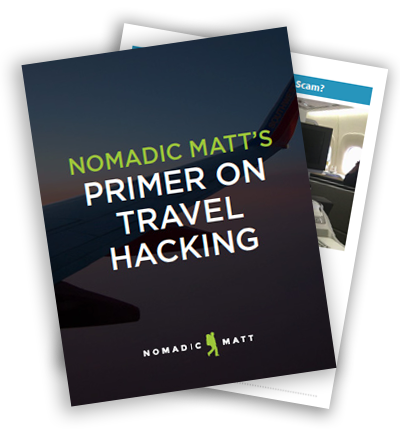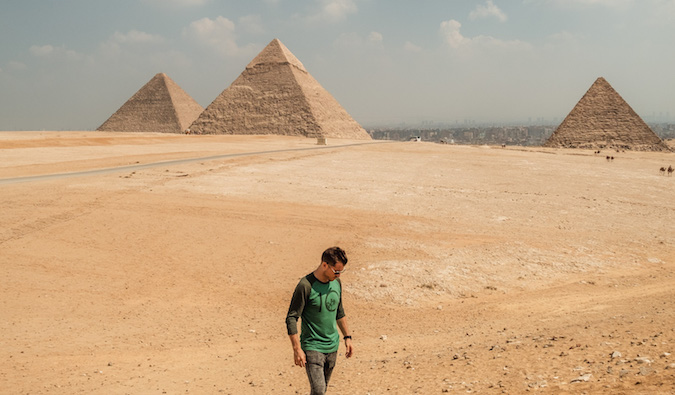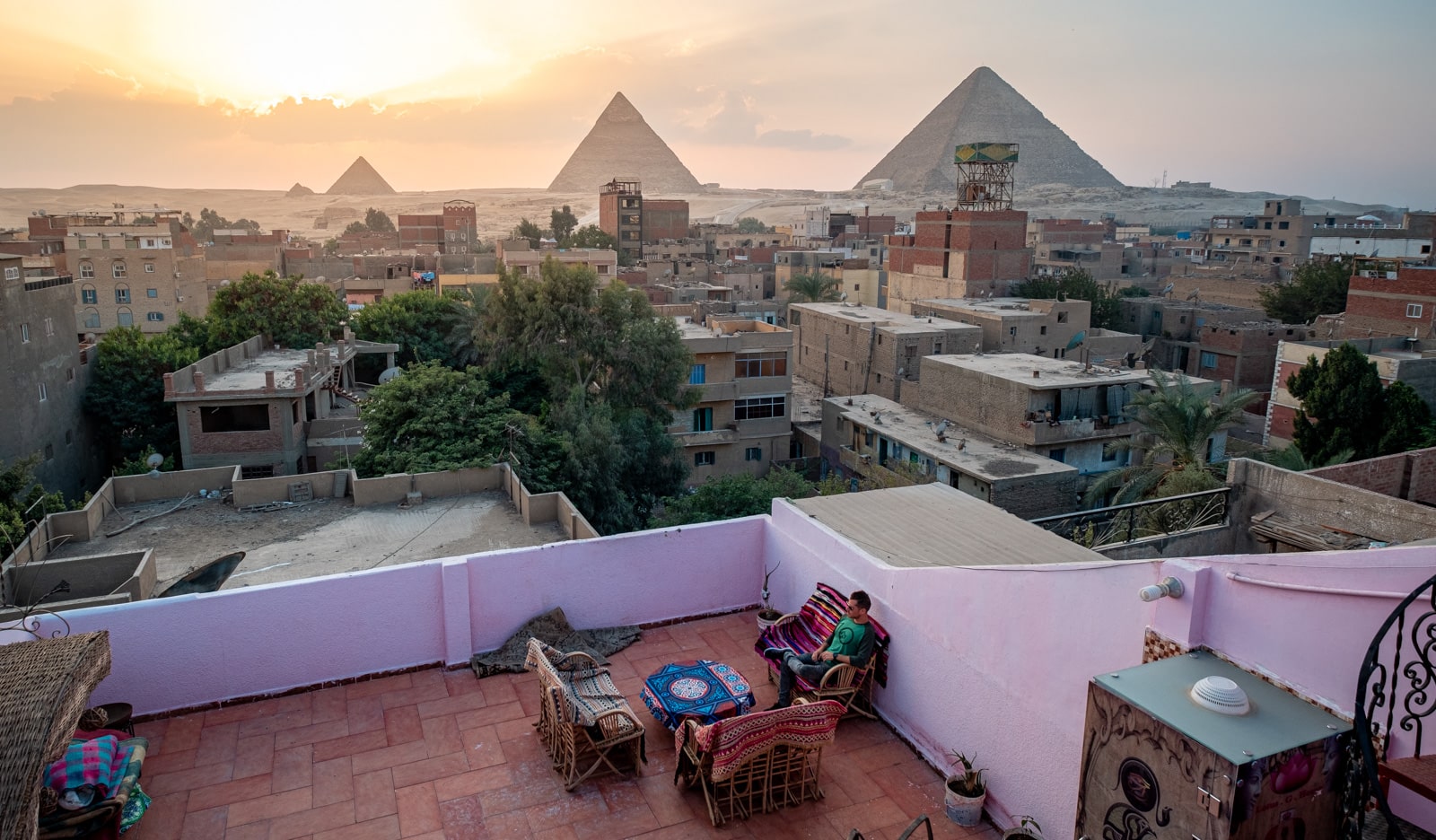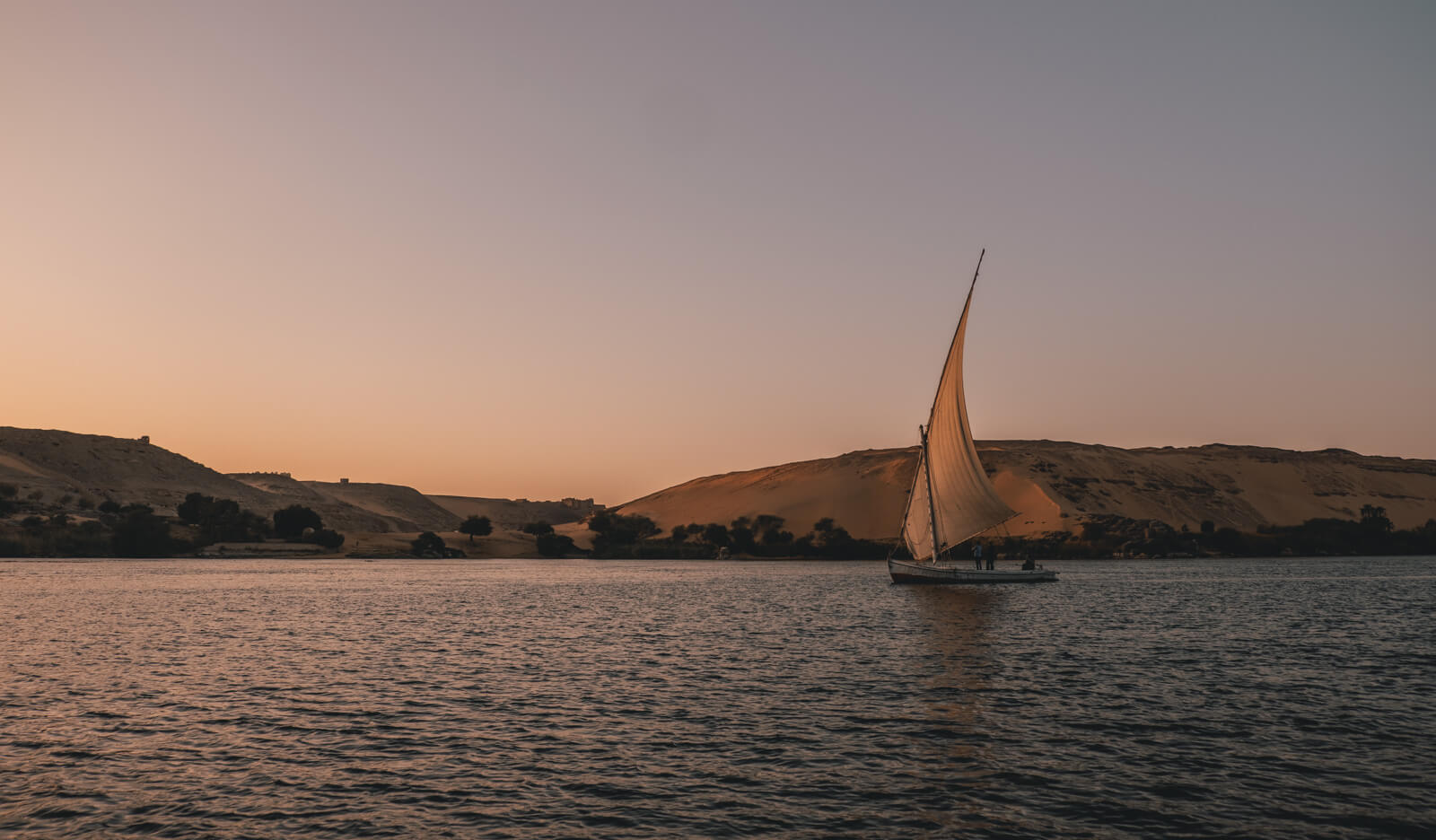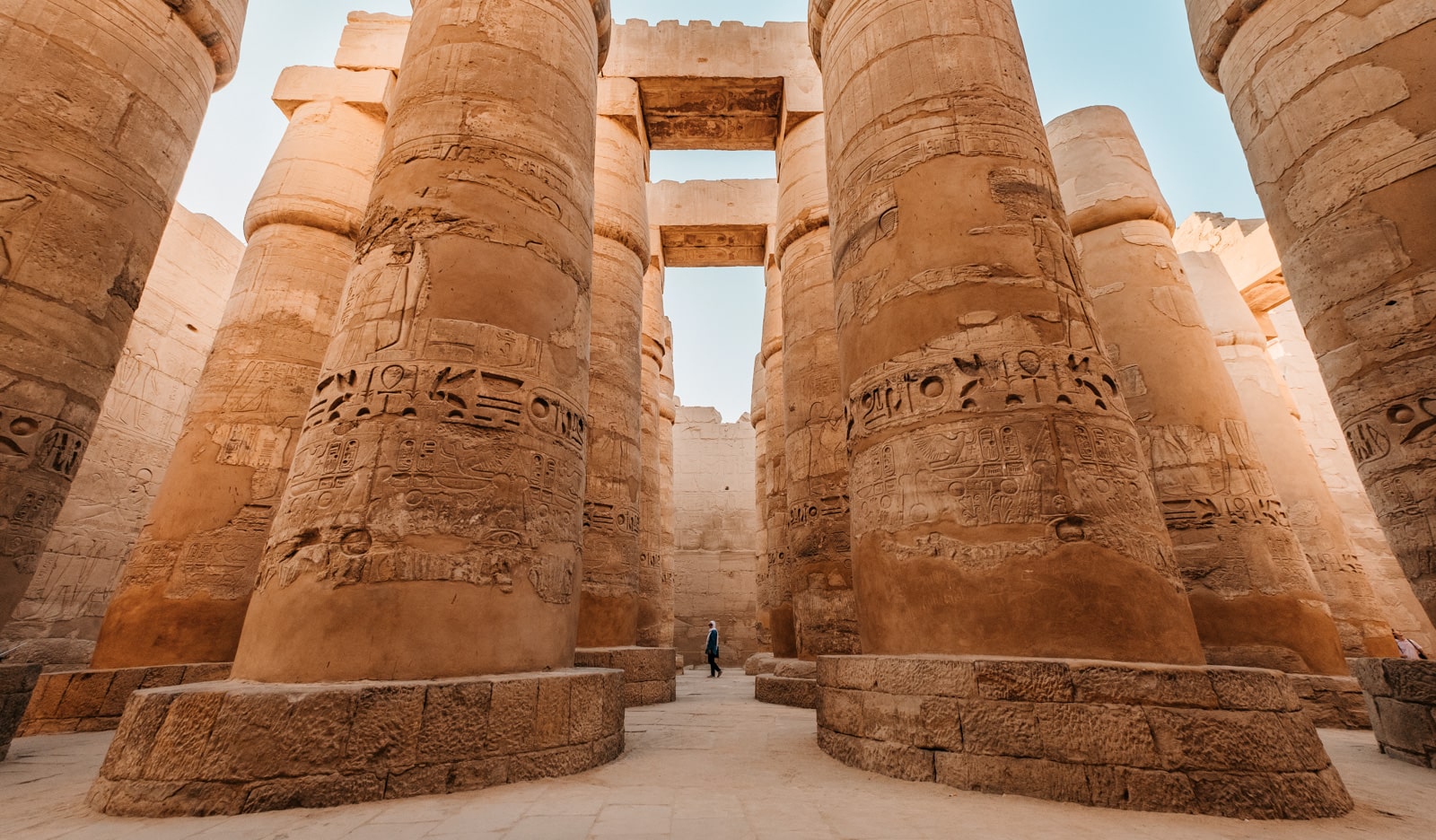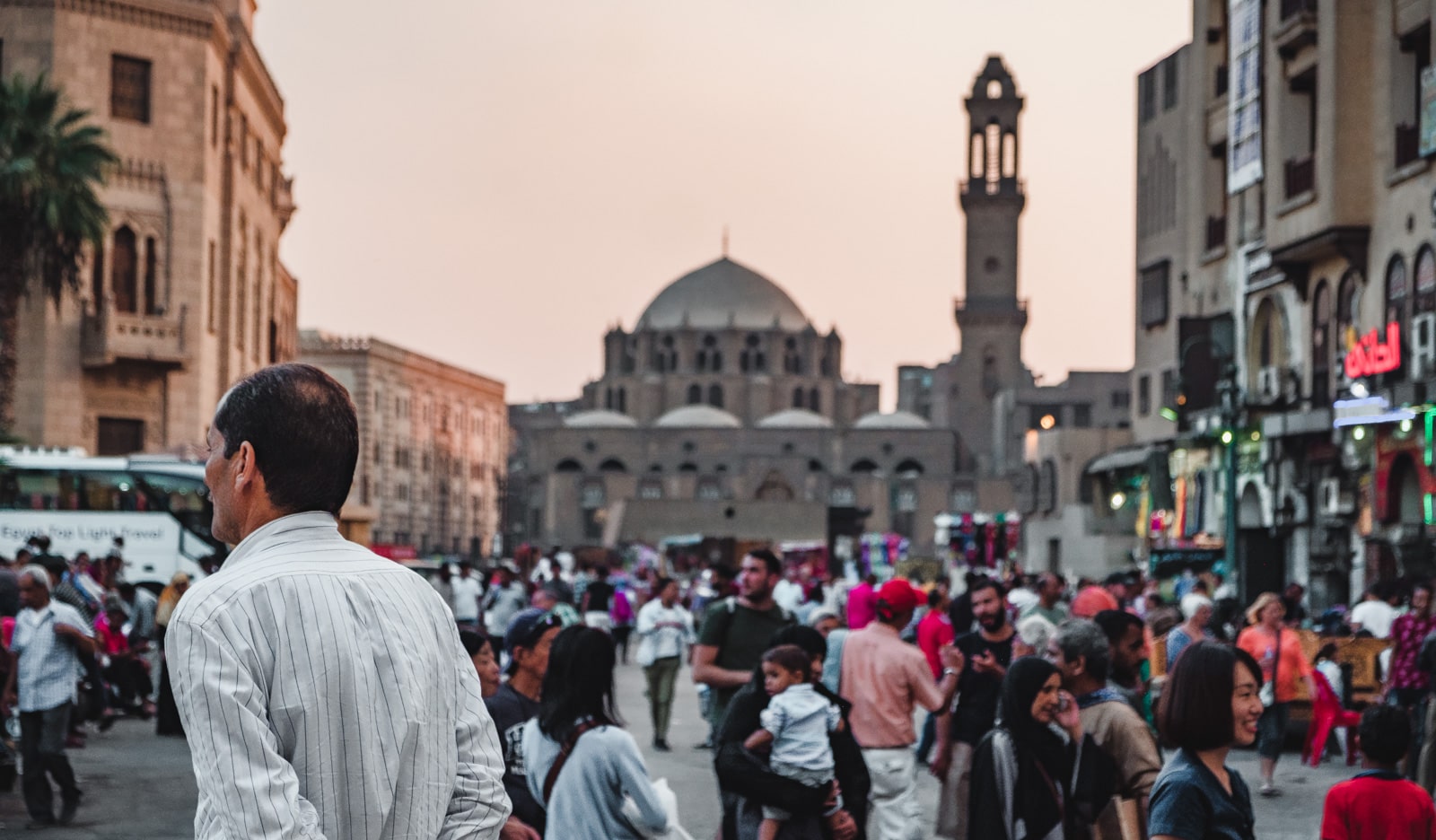
Last Updated: 6/29/21 | June 29th, 2021
I remember when I started planning my first trip around the world. I had no idea what I was doing.
When I decided to quit my job and travel the world, I walked into a bookstore and bought Lonely Planet’s Southeast Asia on Shoestring. Buying that guidebook was my first step toward long-term travel. It made the trip seem more real, more tangible. It made it all seem possible.
While helpful, the book didn’t exactly prepare me for planning a trip around the world. Back then, there weren’t really travel blogs, sharing economy websites, and apps like there are today. I was excited and determined — but I was lost. I had to figure it out as I went, hoping I didn’t miss anything important.
Trip planning can be a daunting task. Where do you begin? What’s step one? What’s step two? What’s step three?
It’s easy to get overwhelmed, especially when you haven’t done something like this before — and especially considering just how much information there is out there these days. Blogs, social media, and guidebooks have never been more plentiful. There’s a firehose of information out there that can sometimes make the task of planning a trip even more challenging and overwhelming.
After a decade of traveling the world, I’ve planned countless trips and vacations for myself, friends, family, and even group tours. In the beginning, it was trial by fire and I learned a lot of lessons the hard way. However, that helped me develop an efficient checklist that ensures I don’t miss anything important during the trip planning process.
After all, I don’t want to get to my next destination and then realize I forgot something. And neither do you!
There is a lot of information on this website (and even more information packed into my book), but one question that comes up frequently is, “Matt, how do I put this all together? How do I plan a trip?”
In a continuing effort to help you get out the door and into the world, I’ve created this step-by-step guide on how to plan a trip. It works for any kind of trip and no matter how long you’re going for! Just follow this checklist and you’ll be off in no time!
Table of Contents
Step 1: Decide Where You Want To Go
Step 2: Decide the Length of Your Trip
Step 3: Will you Travel Solo?
Step 4: Research Your Costs
Step 5: Start Saving Money
Step 6: Get a Travels Rewards Credit Card
Step 7: Switch to No-Fee ATM Cards
Step 8: Stay Focused and Inspired
Step 9: Check for Last-Minute Deals
Step 10: Book Your Flight
Step 11: Book Your Accommodation
Step 12: Plan Your Activities
Step 13: Sell Your Stuff
Step 14: Automate Your Bills
Step 15: Tell Your Card Companies You’re Traveling
Step 16: Pack!
Step 17: Buy Travel Insurance
Step 18: Enjoy Your Trip
If you want to jump ahead, simply click on any of the links above.
Step 1: Decide Where You Want To Go

Defining where you want to go sets a goal to work toward. A lot of people talk vaguely about travel. They never say where they are going, just that they are going. Picking a destination is immensely important, as it gives you a definite goal.
It’s a lot easier to mentally get behind “I am going to Paris in the summer” than “I’m going to Europe” or “I’m going somewhere.” Not only will your trip become more concrete for you and easier to commit to, but it will make planning easier as well…because you know what to work towards. Get specific with your plans. Get detailed. The more focused and concrete your goal, the easier it will be to actually reach it.
Resources for picking your travel destination:
- 200+ In-Depth Destination Guides
- 10 Destinations Under $30 Per Day
- 10 Destinations to Visit When You’re a Budget Traveler
Step 2: Decide the Length of Your Trip
How much does it cost to travel? That depends!
Without knowing how long you’re going away for, I can’t answer that question. And it’s a question you need to answer so you can start planning!
In order to figure out how much you need to save you’ll need to know how long your trip will be.
Are you going away for a week? A month? A year?
The length of your trip is a huge factor in determining how much money you need. Spend some time mulling that over until you have your answer.
For example, after you say “I’m going to Paris this summer,” add “for X days.” That way you can start to narrow down just how much money you’re going to need to save. “I am going to Paris for 10 days” is a trip that you can plan for. It’s an attainable goal.
Step 3: Will You Travel Solo or Go With Someone?
One of the biggest decisions you’ll need to make is whether you’re going to go alone or travel with someone. Both are great options — but they are decidedly different choices too.
Traveling solo gives you the freedom to go anywhere you want. No compromising. You just go wherever the wind takes you! However, it means you have to do all the planning yourself — which can seem daunting if you’re new to trip planning.
Traveling with someone means you have someone to help plan the trip with you. It will make researching your itinerary faster and you’ll have someone to spend time with on the road. However, it also means you’ll need to compromise sometimes. Perhaps on meals or activities or accommodation. It will just depend on you and the person you travel with.
At the end of the day, there is no wrong answer.
Personally, I love the freedom of solo travel. But I’ve had some incredible trips with friends too. Chances are you’ll get to do both over the years. But for now, what is this trip going to be? Solo or with someone?
Step 4: Research Your Costs
So you know where you’re going and how long you’ll be there, but to really nail down how much money you need, your next task is to research the costs in your destination at the style of travel you want.
Do you want to backpack, or would you rather stay in luxury hotels?
How much are hostels, hotels, restaurants, and attractions?
Knowing will allow you to estimate how much money you’ll need for your trip. Here is how to research costs:
- Buy a guidebook.
- Check out my travel guide section.
- Ask on community websites like our forum.
- Google prices for specific things you want to do, such as scuba diving, bungy jumping, winery tours, etc.
You don’t need to do more than that. There’s so much information on the web that if you go down the rabbit hole of overplanning, you’ll get lost and confused by the firehose of information. Stick to those four things and you’ll be set!
In our example, if you are going to Paris for 10 days and need at least $75 USD a day (not including your flight), you know you need to save $750 USD (though round up to $800 USD since it’s good to have extra) for your trip.
If you were to travel around the world for a year, you’d need $50 USD a day.
Here are some other insightful posts that will help you better estimate your costs:
- 5 Ways to Make Your Money Last When You Travel
- How to Know the Travel Info You Find is Legit
- How I Research My Solo Travel Destinations
Step 5: Start Saving Money

Before you can start saving money, you need to know how much you have and how much you’re spending. Start to write down all your current expenses so you can determine where you are spending money — and how you can cut back.
People bleed a lot of money every day through small purchases: a coffee here, a snack there. All of that adds up. In order to make changes to your spending habits, you first need to understand them. Making a list will do just that. It will also put your financial needs into a better perspective.
For example, if you need $2,000 USD for the trip you’re taking in eight months, that means you only have to save $8.33 USD per day. Couldn’t you find a way to save $8 USD per day? Heck, your daily coffee is most of that!
If you’re struggling to save money, here are 23 ways to cut your expenses and save money for travel. This will help you get started and on the road to saving money in no time!
Step 6: Get a Travels Rewards Credit Card

While you’re working to save money, get a travel credit card so you can earn sign-up bonuses to redeem miles and points for free flights and hotel stays. Collecting points and miles from travel credit cards is how I get tons of free flights, free hotel stays, and free travel perks every single year — and without any extra spending too!
These days, most cards have welcome offers of up to 50,000 points when you meet their minimum spending requirement. That’s enough miles for a free flight almost anywhere in the world!
If you want a free flight, sign up for the cards that help with that. If you want free hotel rooms, get a hotel card. Either way, sign up for a travel credit card and start earning points today. As long as you can pay off your monthly balance, you’ll get free travel credit.
You don’t need to sign up for very many cards either; pick one or two and focus on those. Do this the moment you decide you want to travel. Don’t wait — waiting equals lost miles, which means less free travel.
Collecting points and miles (which is called “travel hacking”) is what all the experts do to cut their costs and travel longer. It’s what has kept my costs down and me on the road for so many years. While the best cards are only available in the US, there are still plenty of options for Canadians as well as folks from Europe, Australia, and New Zealand.
For more information on travel hacking and travel credit cards, check out these posts:
- How to Pick the Best Travel Credit Card
- How I Earn 1 Million Frequent Flier Miles Every Year
- The Best Travel Credit Cards in 2021
- The Ultimate Guide to Travel Hacking
- How to Be a Travel Hacker in Canada
Step 7: Switch to No-Fee ATM Cards
Once you’re abroad, you;re going to need money. While many countries will accept credit cards, in the majority of countries cash is still king. That means you’ll need to use ATMs to withdraw the local currency. And that also means you’re going to get dinged by ATM fees.
If you’re just away for a week or two, paying a few dollars in ATM fees isn’t the end of the world. But if you’re away for a longer period, those fees will add up and chew into your travel budget — a budget you’ve worked hard to grow. Don’t give banks any of your hard-earned money.
How? By using a no-fee ATM card.
I use Charles Schwab, but there are lots of other banks (don’t forget to check your local banks) that don’t charge ATM fees. Additionally, you can join a bank in the Global ATM Alliance.
By using a no-fee ATM card you can avoid those pesky ATM fees, leaving you more money for what it was intended for: travel
Here’s exactly how you can avoid ATM fees while traveling.
Step 8: Stay Focused and Inspired
While you get closer to your goal, make sure that you keep feeding your desire to travel. Travel planning can be exhausting and overwhelming — especially if you don’t have support from your friends and family (and especially if your trip is still months away). It can often get discouraging and feel out of reach at times.
Luckily, there are tons of ways to stay focused and keep your spirits high thanks to the amazing community we have on this website. Here are some inspiring travel stories to help keep you inspired to travel:
- Why It’s Never the Perfect Time to Travel
- 13 Travel Books that Will Give You Serious
- How Michael Saved $14k in Six Months
- Why a 50-Year-Old Couple Sold It All to Travel the World
- How to Change the “I’m Too Poor to Travel” Mindset and Say Yes to Travel
- 8 Ways to Stay Motivated to Travel
Additionally, be sure to join our online travel group The Nomadic Network. Not only will you find support (and tons of tips) online, but we also host regular in-person and virtual events all around the world. These are a great way to get inspired, meet other awesome travelers in your area, and get travel advice.
Step 9: Check for Last-Minute Deals
Okay, you’re inspired, prepared, and on your way to saving money for your trip. But before you go buy that flight or book that hotel, check for deals you might have missed. You may dream of Paris but maybe there are great deals to Berlin right now. Or maybe you can get a seven-day cruise for 70% off, a package deal to Hawaii for the price of your flight to Paris, or 50% off sailing trips around Greece.
These days, there is always a deal to be found — especially if you’re flexible with your dates and/or destinations. Some deal websites worth checking out are:
Step 10: Book Your Flight

After you’ve used your travel credit card and received your sign-up bonus, use your miles to book your flight. It is harder to use miles these days due to less availability, so make sure to book early to ensure you get your desired flight.
Fortunately, there are still many ways to avoid being the person on the flight who paid the most for their ticket. My favorite sites for finding cheap airfare are:
- Skyscanner – Skyscanner is the best website for searching multiple destinations at the same time.
- Momondo – A great platform for finding really cheap flights.
- Google Flights – Like Skyscanner, Google Flights is great for open searches to multiple destinations.
- Kiwi – Kiwi is great for finding lesser-known routes or smaller carriers.
- AirTreks – AirTreks focuses exclusively on multi-destination RTW tickets.
For the best deals, book your flight about two-three months in advance. Here are two articles on how to score a cheap flight:
Step 11: Book Your Accommodation
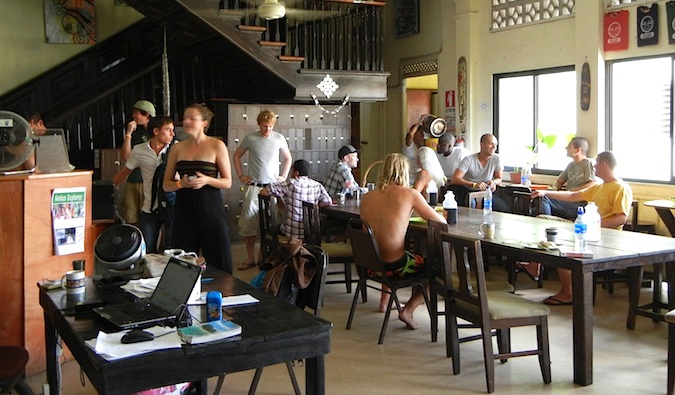
If you’re traveling for under two weeks and have a set schedule, feel free to book accommodation for the duration of your trip if it will give you peace of mind (or if you’re visiting during the high season).
For trips longer than two weeks (or if you are going to be traveling long-term) just book your first few days. That will ensure you have a place to go on arrival. Once there, you can get insider advice from your hotel/hostel staff as well as other travelers. You can then use that info to plan your next steps.
While you can book more than your first few nights, you might end up wanting to change your plans once you land. I prefer having flexibility, which is why I always just book my first few nights and go from there.
Here are my go-to sites when it comes to finding the best deals on accommodation:
- Hostelworld – Hostelworld has the largest selection of hostels and is my go-to site for finding affordable hostels.
- Agoda – Agoda has the best results if you’re heading to Asia (though they sometimes have good US deals too).
- Booking.com – Booking.com is the best overall platform for finding budget hotels and guesthouses.
- Airbnb – The go-to site for apartment rentals.
If you plan on staying in a lot of hotels during your trip, sign up for a hotel credit card before you depart. Cards like Marriott’s Bonvoy Boundless offer a huge welcome bonus, 6x the points on hotel stays, and a free hotel stay every year. Whenever I stay in a hotel, it’s because I’ve earned it with free points!
If you’re on a tight budget or you want to connect with more locals furing your travels, consider joining platforms like Couchsurfing or BeWelcome. These communities allow travelers to stay with locals for free as a sort of cultural exchange.
Long-term travelers can also try housesitting or WWOOFing as well as they both offer free accommodation (in exchange for pet sitting or farm work respectively).
Step 12: Plan Your Activities
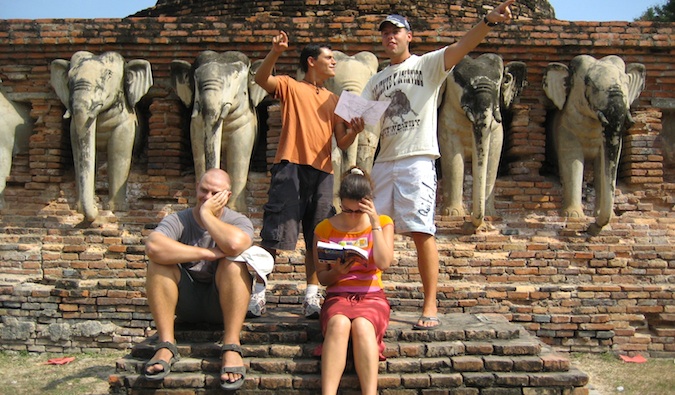
To make sure you have budgeted properly, outline the major activities you want to enjoy during your trip and how much they cost. Make any last-minute adjustments to your savings so you can ensure you have enough money. This will also help you figure out if you need any reservations for your chosen tours or activities.
Search online for discounts as well. While some countries offer cheaper prices in person, others give discounts to those who book early/online. Research which is which for your itinerary so you can save money.
For shorter trips, you can also book your activities in advance to ensure you get tickets. For longer trips, book as you go.
Additionally, before you leave home, have a rough idea of what activities are priorities for you. That way, if you run out of time or money, you can focus on your top activities so you don’t miss out. Also, make sure to double-check that there are no holidays or other obstacles that will prevent you from certain activities as well.
Step 13: Sell Your Stuff
If you are going on a long-term trip (six months or more), consider selling your stuff in order to earn extra money for your trip. Start doing this about 60 days before you leave. Some sites to use are:
- Gumtree – An online classified site with a focus in the UK and Australia.
- Amazon – The biggest online store in the world.
- Craigslist – Online global classifieds that have both local and global reach.
- eBay – Another global online classified site.
- Facebook Marketplace – Great for finding people near you (so you don’t need to ship your items).
If you aren’t going to be gone that long, skip this step. If you are going away long-term but want to keep your stuff, move it to a friend’s house or keep it in storage. A good storage company in the US is Public Storage. It’s one of the most affordable options out there.
Step 14: Automate Your Bills
Get rid of your mail, go paperless, and set up online bill payment for your recurring bills to ensure you won’t miss any while overseas. If you are still going to get paper mail, use a service like Earth Class Mail, which will collect and scan your mail for you. (If you are going on a two-week trip, you don’t really need to worry about this, so you can skip this step, too.)
If you have the option (and don’t want to pay for a mail service), you can also have all your mail sent to a friend or family member.
Additionally, you’ll want to make sure you cancel any phone plans you have or switch your plan to one that is more travel-friendly. T-Mobile is great for travelers going on trips under 3 months. For any trips longer than that, you’ll want to cancel your plan and just buy SIM cards abroad. That will be much cheaper!
Step 15: Tell Your Card Companies You’re Traveling
No matter how long you’ll be gone, it’s a good idea to let your credit card companies know you will be overseas; that way any transactions that you make aren’t flagged as fraudulent and your card is less likely to be blocked. There’s nothing worse than having to sit on the phone with your credit card company instead of enjoying your vacation.
Also, make sure you have multiple credit cards and debit cards with you. That way, should one card get flagged, lost, or stolen you won’t be left high and dry. I’ve lost cards, had them stolen, and had them flagged many times over the years. Without a backup, I would have been stranded — so plan ahead and bring some backup cards just in case!
Step 16: Pack!
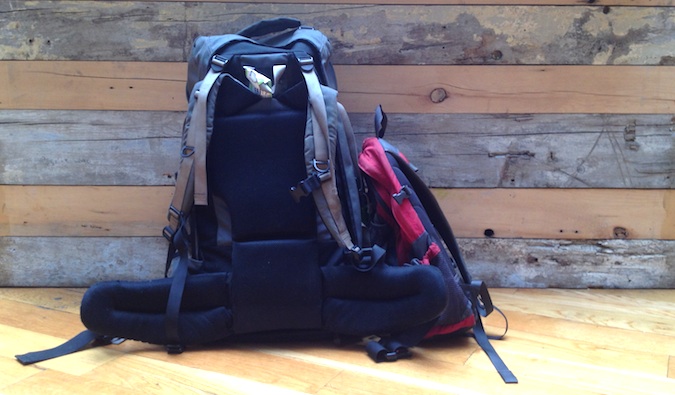
Time to pack for your trip! It can be tempting to want to bring everything with you “just in case” but when it comes to travel, less is more. You don’t need 5 sweaters or 8 pairs of shoes. You can get by with less, I promise. it’s actually quite liberating once you get used to it!
I travel with a 45L REI bag and then a smaller day bag.
Unless you’re heading to multiple climates and need bulky winter gear, you don’t need a massive 70L bag stuffed to the top. Here’s my suggested packing list to help you take just the right amount of stuff and avoid overpacking (here’s a list for female travelers as well).
While what you pack will depend on where you are going, remember that you don’t need to pack everything you own. You can buy things you need on the road. You can do laundry overseas. At the end of the day, you have to carry everything you bring. So bring less!
There are a few extra items you might want to pack beyond your everyday clothes, though. Some things I like to bring with me are:
- First aid kit
- Reusable water bottle
- LifeStraw or SteriPen water filter
- Packing cubes (to stay organized)
- Travel lock (for hostel lockers)
- Travel adapter
- Quick-dry towel
Additionally, make sure you bring any prescriptions with you so you have enough for the duration of your trip. If that’s not feasible, bring a doctor’s note and prescription with you so you can fill it abroad.<
Step 17: Buy Travel Insurance
While a lot of people think, “I’m healthy, I don’t need travel insurance. I won’t get sick,” travel insurance is much more than just medical protection. It covers you when your camera breaks, your flight is canceled, a family member dies and you have to come home, or if something gets stolen.
Yes, it’s an added expense. But it’s always better to be safe than sorry. I never leave home without it because I’ve seen first-hand just what can happen on the road.
I never thought I would pop my eardrum while I was scuba diving in Thailand or break my camera in Italy.
I didn’t know I would get knifed in Colombia.
My friend never thought he would break his leg hiking.
Another friend didn’t expect her father would die and she would have to fly back home.
Unfortunately, bad things can happen when you’re traveling. True, these events are few and far between. But they can cost tens of thousands of dollars to handle on your own. If you’re not prepared to pay out of pocket, buy travel insurance.
To help you figure out the best plan for you and your trip, here’s my ultimate guide to picking a good insurance company. It will show you how to pick a good plan that covers you for when you get sick, your flights get canceled, if you get injured, something gets stolen, or your trip is delayed.
My favorite company is World Nomads and I use them for all my trips. If you’re older than 70, check out Insure my Trip as they are the best provider for older travelers.
For more information on travel insurance, you can check out these posts:
- What Does Travel Insurance Actually Cover?
- Is Travel Insurance Worth It?
- World Nomads Insurance Review
- Do You Need Medical Evacuation Insurance?
- The 5 Best Travel Insurance Companies in 2021
Additionally, make sure you know your rights as an airline passenger. For example, delayed flights to/from Europe often mean you’re entitled to compensation (beyond anything insurance-related). Learn how to ensure you are compensated if your travels are delayed or your flight is canceled.
Step 18: Enjoy Your Trip

And now, everything comes together. It’s time to go on your trip and have fun! Head to the airport, board your plane (don’t forget your passport!), and enjoy the fruits of your labor. You’ve earned this!
If you’re feeling nervous, don’t worry — that’s perfectly normal. You’re about to embark on an amazing adventure — and that’s a huge change. Feeling anxious or nervous or unsure is something every traveler experiences. But you’ve made it this far. Trust your planning, follow your instincts, and you’ll have the trip of a lifetime. I guarantee it.
By using this post as a guideline for your trip planning, you can better organize and prepare for your trip. You’ll check all the boxes, not miss anything, and have plenty of money for your vacation. It can be as simple as booking a flight and packing or as complex as rearranging your entire life to go backpack the world forever.
But, no matter how long your trip may be, this list will help you stay organized and motivated as you plan your trip and step and out into the world.
P.S. – Yes, I did leave out visas and vaccinations, because needing those isn’t as universal as the other stuff on this list, but don’t forget to check if you need those, too!
Want to have this information at your fingertips? Download this post as a PDF
How to Travel the World on $50 a Day
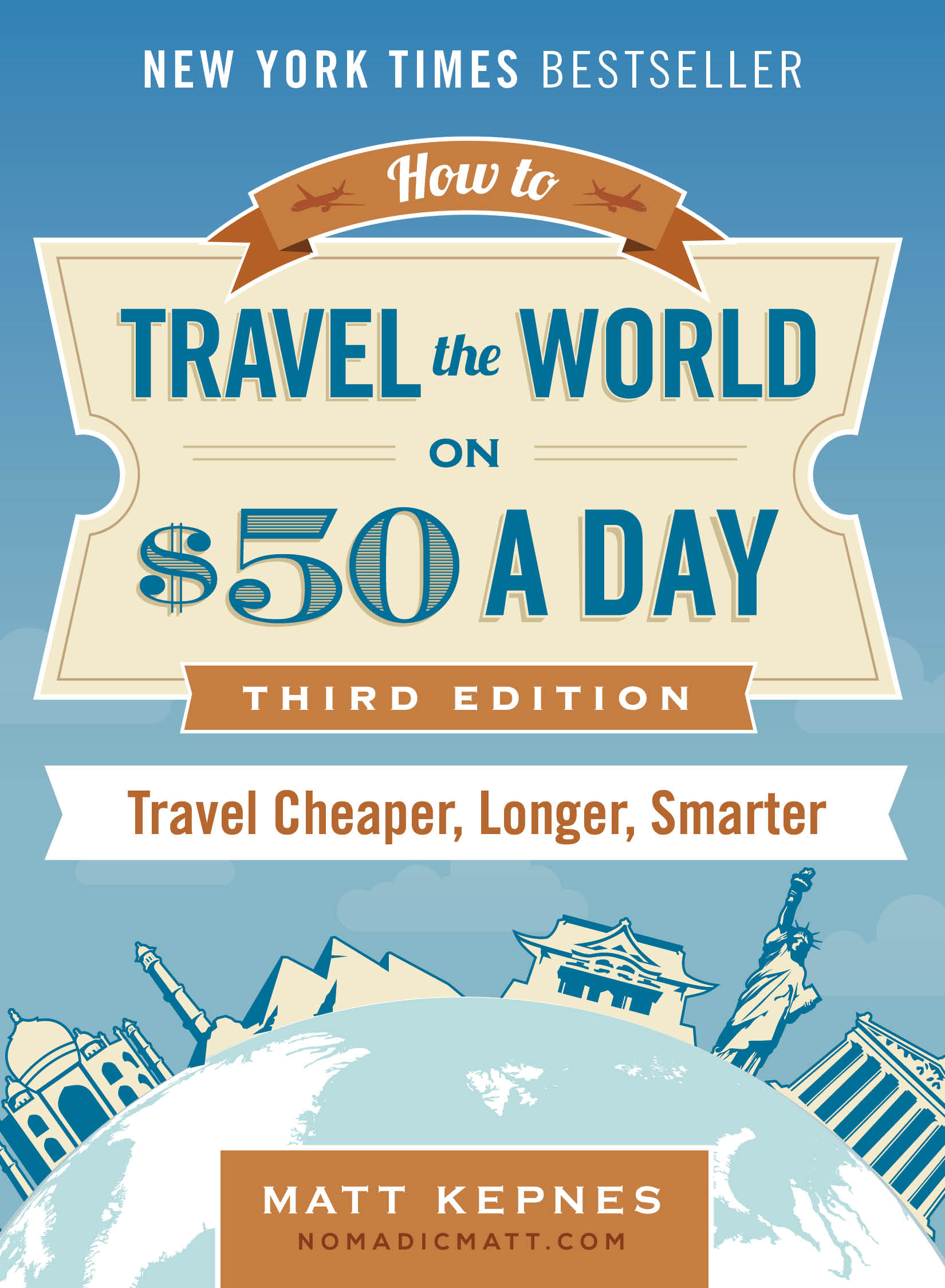 My New York Times best-selling paperback guide to world travel will teach you how to master the art of travel so that you’ll get off the beaten path, save money, and have a deeper travel experience. It’s your A to Z planning guide that the BBC called the “bible for budget travelers.”
My New York Times best-selling paperback guide to world travel will teach you how to master the art of travel so that you’ll get off the beaten path, save money, and have a deeper travel experience. It’s your A to Z planning guide that the BBC called the “bible for budget travelers.”
Click here to learn more and start reading it today!
Book Your Trip: Logistical Tips and Tricks
Book Your Flight
Find a cheap flight by using Skyscanner or Momondo. They are my two favorite search engines because they search websites and airlines around the globe so you always know no stone is left unturned.
Book Your Accommodation
You can book your hostel with Hostelworld. If you want to stay somewhere other than a hostel, use Booking.com as they consistently return the cheapest rates for guesthouses and cheap hotels.
Don’t Forget Travel Insurance
Travel insurance will protect you against illness, injury, theft, and cancellations. It’s comprehensive protection in case anything goes wrong. I never go on a trip without it as I’ve had to use it many times in the past. I’ve been using World Nomads for ten years. My favorite companies that offer the best service and value are:
- World Nomads (for everyone below 70)
- Insure My Trip (for those over 70)
- Medjet (for additional repatriation coverage)
Ready to Book Your Trip?
Check out my resource page for the best companies to use when you travel. I list all the ones I use when I travel. They are the best in class and you can’t go wrong using them on your trip.
The post 18 Easy Steps for Planning Your Next Trip appeared first on Nomadic Matt's Travel Site.

